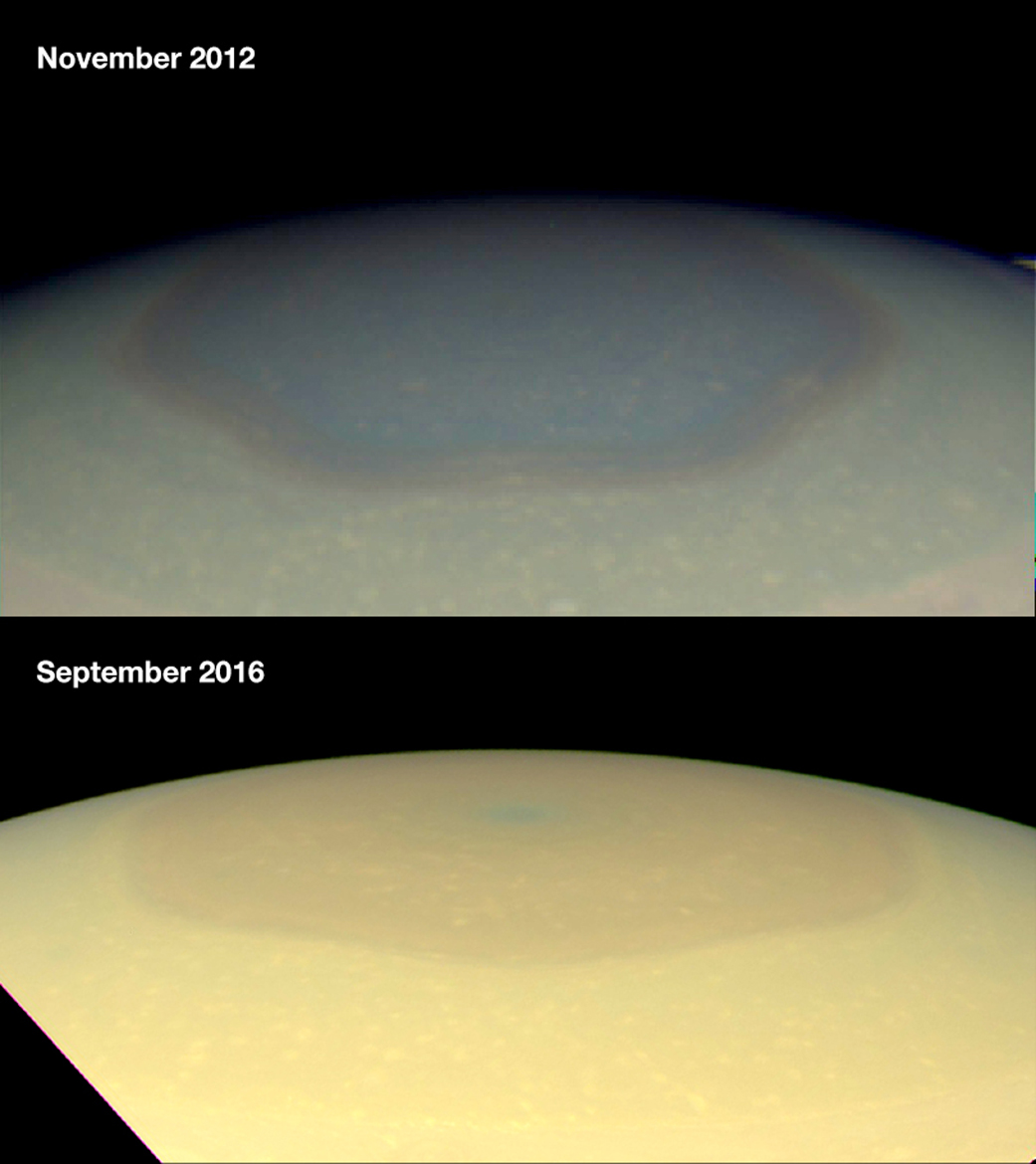Saturn's North Pole Has Changed Color, But Why?

Spectacular photos captured by NASA's Cassini spacecraft reveal a curious color change over Saturn's north pole. The occurrence may be linked to seasonal changes and the planet's enormous hexagonal jet stream.
The images were captured by Cassini's wide-angle camera between 2012 and 2016. Photos from 2012 show a bluish halo over Saturn's north pole, while those taken in 2016 show the same area with a more golden hue.
Saturn's north pole has a unique, six-sided jet stream known as "the hexagon," which is approximately 20,000 miles (32,000 kilometers) wide. Winds of this hexagonal vortex whip through the planet's atmosphere at approximately 200 mph (322 km/h). [Cassini Snaps New Views of Saturn's Hexagon (Video)]
Preliminary hypotheses suggest the color change observed in the atmosphere over Saturn's northern hemisphere could be associated with the jet stream. For instance, the hexagonal vortex may act as barrier and prevent surrounding particles from entering the area. In this case, the sky over Saturn's north pole would have been cleared of haze or aerosols during the seven-year-long Saturnian winter, according to a statement from NASA. Then, haze production would have ramped up again when the pole was exposed to sunlight.
"Scientists are investigating potential causes for the change in color of the region inside the north-polar hexagon on Saturn," NASA officials said in the statement. "The color change is thought to be an effect of Saturn's seasons. In particular, the change from a bluish color to a more golden hue may be due to the increased production of photochemical hazes in the atmosphere as the north pole approaches summer solstice in May 2017."
Photochemical hazes, or aerosols, are created from reactions between sunlight and the atmosphere. Saturn experienced equinox in August 2009, and since then has been subjected to continuous sunshine. During this time, photochemical aerosols have accumulated in the sky above Saturn's north pole, creating the golden haze observed today.
However, other factors, including changes in solar heating and wind patterns, could cause a shift in the planet's atmospheric circulation, officials said in the statement. These factors may also play a role in the observed color changes, the officials said.
Get the Space.com Newsletter
Breaking space news, the latest updates on rocket launches, skywatching events and more!
The Cassini-Huygens spacecraft has been orbiting Saturn since 2004, and the mission is expected to come to a close in September 2017. Researchers will continue to study data collected from Cassini to get a better understanding of this curious color change.
Follow Samantha Mathewson @Sam_Ashley13. Follow us @Spacedotcom, Facebook and Google+. Original article on Space.com.
Join our Space Forums to keep talking space on the latest missions, night sky and more! And if you have a news tip, correction or comment, let us know at: community@space.com.

Samantha Mathewson joined Space.com as an intern in the summer of 2016. She received a B.A. in Journalism and Environmental Science at the University of New Haven, in Connecticut. Previously, her work has been published in Nature World News. When not writing or reading about science, Samantha enjoys traveling to new places and taking photos! You can follow her on Twitter @Sam_Ashley13.









